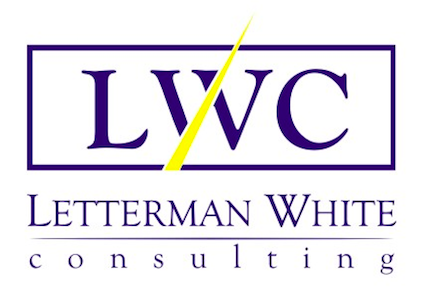By Susan Letterman White
The ability to anticipate and bounce back from setbacks quickly - is among the most valuable competencies. Like the ability to easily learn new skills, it catalyzes a person's ability to respond intentionally, intelligently and with an effective strategy to any surprising and significant change that the person faces. Resilience is what helps a person adapt to adversity, manage stress and even find hidden resources to meet goals that at first glance appear difficult to attain. It is never more important than when you are trying to discern and adjust your personal brand. You have a personal brand. Everyone does. It is the image you project and is a consequence of every single aspect of your identity and behavior. This part of your identity is expressed whenever you are communicating, i.e., whenever you are in the same physical or virtual space as another person. You can't really identify your brand with accuracy without information from other people about how they perceive you. You may have a few ideas, and your ideas may even be correct. However, personal brand is what other people notice about you. It's a particularly difficult challenge to discover that your personal brand isn't what you thought it was and perhaps not aligned with your goals. This twinge to one's self image is what has been called an "identity abrasion."1 It is easy for someone who is accustomed to excelling academically to have a self-image as a high performer, and interpret the information about his or her brand that doesn't match the person's self-images as a fatal mistake or failure. In truth, it is nothing more than data to evaluate and an opportunity to learn something about how other people, who have experienced you in a particular context, perceive you. An identity abrasion to someone with low resilience can cause shock and a sense of loss. When this happens, it takes time to psychologically process the feelings associated with shock and loss. Some people are so fearful of an identity abrasion that they will protect themselves by refusing to collect data about their brand from other people. Unfortunately all this strategy achieves is to keep those vulnerable and low resilient people blind to the most valuable gift - feedback about what others believe is true. People with higher levels of resilience approach challenges with optimism that they will succeed. They have more confidence, are more motivated to tenaciously plow through difficulties, and view themselves as problemsolvers, rather than victims of unfortunate circumstances. Having this attitude, which can be cultivated with training, coaching, and practice, is what directs them to want data on their brand and make sense of it through an analytical lens crafted by curiosity. For this reason alone, developing your brand with the help of a coach is invaluable.
Tips for developing resilience
Identify competencies associated with emotional intelligence and develop them. Learning to manage your strong emotions, such as the anxiety associated with an identity abrasion, is one element of emotional intelligence. Another aspect of emotional intelligence, the ability to affect the emotions of others, will help you develop a brand that will help you expand your network. After all, people like helping people that they like, and people like people who affect their feelings in a positive manner. Learn to reduce your anxiety with controlled breathing, relaxing your tensed muscles, and using positiveimagery. Learn more about your anxiety through close attention to the circumstances surrounding your anxiety and reflecting on the experience afterwards.
PBN: Pause. Take three deep Breaths. Notice what is happening around you according to your five senses, and to you - physiologically, emotionally and what you are thinking and saying to yourself.
Tips for identifying and developing your personal brand
First ask yourself about yourself: What matters most to you? Who are you? What do you do? How do you do it? How are you different from everyone else? What do you want people to remember about you after you leave? Second, ask your colleagues, friends, clients, supervisors and anyone else that knows you, what they notice and remember most about you. Not everyone will perceive you in the same way. Your personal brand may vary from one person and context to the next. Third, given your vision for success, goals and the people with decision-making power that matter to you, how, if at all, do you want to change your brand? Fourth, what will you do first to change your brand from what it is today to what you want it to be? The overlap between brand and resilience is the last step for developing your personal brand. That step is when you identity the action steps you will take to notice and manage any identity twinge that might arise.
1. Martin Davidson, "The End of Diversity as We Know it: Why Diversity Efforts Fail and Why Leveraging Differences Can Succeed" (2011).


